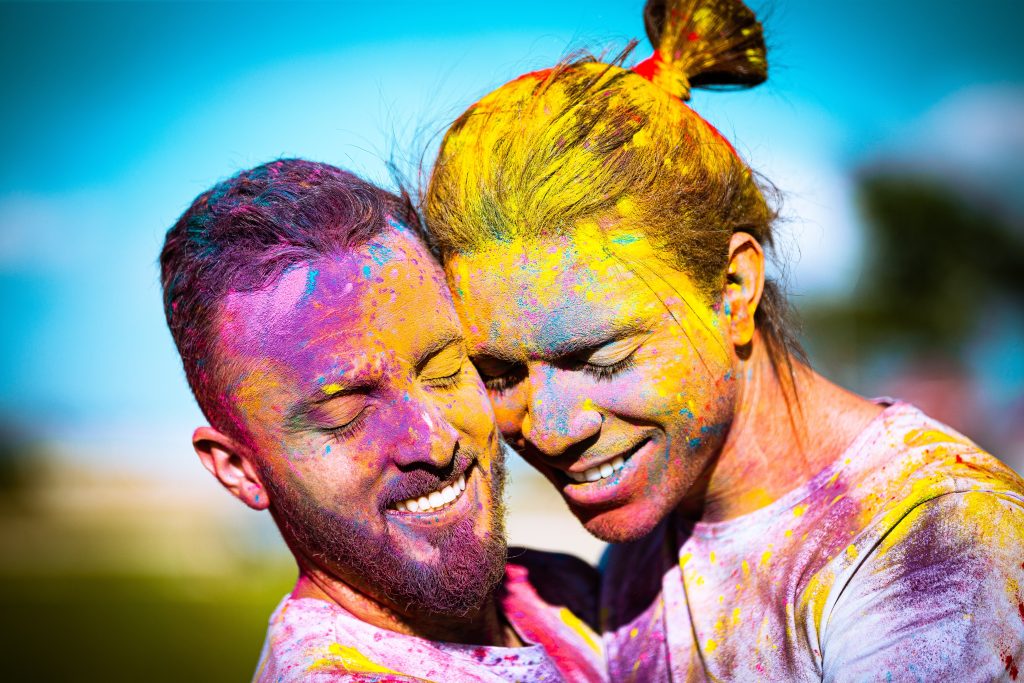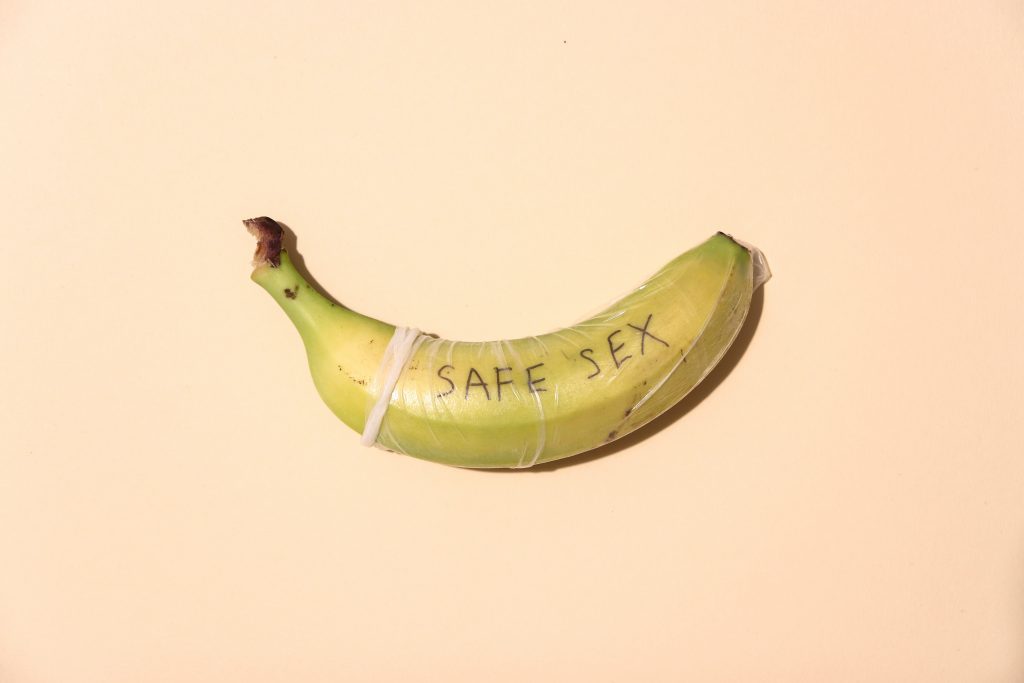Good sexual health relies upon good sexual education. Unfortunately, sex ed programs often leave out a lot of vital information. This can leave a lot of kids in the dark and lead to unsafe sexual behaviour. Younger LGBTQ+ people are more likely to be affected by inadequate sexual education. This is largely due to heteronormative societies restricting access to information about non-hetero sex. Sex is an essential part of human nature and it’s important to educate all youth. Thus, inclusive sexual education promotes knowledge for LGBTQ+ youth.
What is LGBTQ+?
LGBTQ+ is an acronym to describe a person’s sexual orientation and gender identity. The acronym stands for lesbian, gay, bisexual, transgender and queer or questioning. The plus sign means other alternative sexual identities (two-spirited, nonbinary, asexual, etc.). In short, the purpose of this acronym is to include a wide range of people. For this reason, it is important not to neglect the “plus sign”.
The concept of sexual identity can be complicated. So, researchers recently created a more inclusive and multidimensional definition. This incorporates:
- sexual attraction
- fantasy
- behaviour
- and romantic, emotional, and social preferences
Scholars include cognitive and emotional understandings about one’s sexual attractions, desires, behaviours, values, and relationships, in the concept of sexual identity. In short, these create a more comprehensive view of personal and social sexuality.

LGBTQ+ representation is very important for many different reasons:
- it can boost self-esteem,
- it reduces stereotypes of underrepresented groups,
- and it provides validity and support to marginalized groups.
In a society that still has heteronormative tendencies, it is critical to support and represent the LGBTQ+ community. The lack of LGBTQ+ representation in the music and film industry is reflected in the education sector.
How is Sex Education Failing LGBTQ+ Kids?
It is important to provide an education that is inclusive of all children’s experiences to keep them safe and healthy.
Many parents do not have ‘the talk’ with their children. This leaves the child uneducated about a very complex and important topic. Thus, it’s critical to teach inclusive sexual education in schools. Some countries teach sexual education as early as 4 years old.
Young people begin to practice sex from the age of 16 and sometimes younger. This means teenagers need to know about sex and how to stay safe. Abstinence-only education is a form of “sex ed” that tells young people not to have sex. This approach is ineffective. Teaching abstinence does not reduce the rates of STI’s or STD’s. Instead, it withholds important information about contraceptives as well as reinforcing gender stereotypes.
For the LGBTQ+ community, sexual education is almost non-existent. They are rarely taught anything about their sexual identities and preferences.
Studies have concluded that well-designed and properly implemented sex education can reduce risk behaviour and support positive sexual health outcomes among teens. This includes, reducing teen pregnancy and sexually transmitted infection rates. Unfortunately, LGBTQ+ youth are often excluded from sex education. As a result, risky sexual behaviour and increased STI rates are more common in the LGBTQ+ community.

Inclusive Sex Ed Around the World
USA
In America, only 7 of 50 states are LGBTQ+ inclusive when it comes to sex ed. To make matters worse, 7 states restrict LGBTQ+ related content in sex education curriculum.
Australia and Canada
Australia and Canada both include LGBTQ+ sex ed in their curriculum. This does not mean teachers do their job in educating students of the subject matter. It is common for educators to avoid this specific component of health class. When teachers do mention LGBTQ+ sex, they rush it. Sometimes teachers will behave as though LGBTQ+ students don’t exist.
In many states across these three not-so-progressive countries, parents have the ability to opt their child out of sexual education. This puts the ultimate decision back on the parents.
Europe
But, in Europe there are countries that are much more progressive than Canada, Australia, and America. England, Denmark, Sweden, and the Netherlands cover sexual diversity that is LGBTQ+ inclusive in schools.
The Negative Consequences of Poor Sex Ed
Lack of LGBTQ+ inclusive sex education has adverse effects on mental health. The minority stress theory proposes that minority groups suffer from mental health affects. Specifically when discrimination occurs to minority populations. In the case of the LGBTQ+ community, this can result in internalized homophobia. Internalized homophobia is when an individual holds negative beliefs about their own sexual identity. Thus there is a negative effect on one’s self-esteem and feelings of self-worth. This can eventually manifest as or evolve into mental illness.
Many of these stereotypes learnt are embedded in the education system. This is adopted from teachers, parents, the curriculum, or textbooks. The GLSEN 2019 National School Climate Survey reports only 19.4% of LGBTQ+ students were taught positive representations of LGBTQ+ people, history, or events in their schools. In the same report a shocking 8.2% reported receiving LGBTQ+ inclusive sex education.
It is important that the LGBTQ+ community have access to correct information about sex as a youth. Normalizing homosexual sex within the community would, in theory, increase mental health well being as well as reduce STI’s among the community.
Dangerous Ignorance
“There has probably never been a population both more heavily impacted and less discussed at scientific meetings than the transgender population around the world”
https://www.afao.org.au/article/trans-and-gender-diverse-people-in-hiv-data/
Young men who have sex with men between ages 13 and 24, account for an estimated 95% of HIV diagnosis. Due to the lack of research on the transgender population, the statistics are abysmal. Globally, around 19.1 % of transgender women are living with HIV.
Female students who identify on the LGBTQ+ spectrum are more likely to contract an STI and are more likely to become pregnant than heterosexual and questioning females. Young bisexual women are at the highest risk of coercion and dating violence.

Many schools incorporate abstinence as an approach to reduce STI’s. Omitting the topic of STI’s and promoting abstinence is not the way to teach sexual education. In Western countries, when learning alternatives to protection against STI’s it is generally to wear a condom. Wearing condoms is important but it can also be considered heterocentric. In conclusion, ignoring STI prevention and protection implies that others who don’t identify as a cisgender male do not have sex for pleasure.
There are alternative preventions to contracting STI’s, specifically HIV. An important alternative is pre-exposure prophylaxis. This is a medicine for people who are at risk of getting HIV to prevent AIDS.
HIV is a subject that is being rapidly researched and needs to be constantly updated. It must be an ongoing conversation that is medically accurate, age appropriate, and most importantly – inclusive of all gender identities and sexual orientations.
What Inclusive Sex Education Looks Like
Sex education in high school should include information about:
- puberty and reproduction,
- contraception and condoms,
- abstinence,
- what healthy relationships look like (for all genders and sexualities),
- sexual violence prevention and consent,
- body image,
- gender identity and sexual orientation.
Many young LGBTQ+ individuals turn to the internet for sexual education. Youtubers and podcasters create useful programs. These programs can help LGBTQ people get information on safe sex. Some students stated the internet to be a useful resource when attempting to navigate early homosexual relationships.
The hinderance of young LGBTQ+ students having to research sex education on the internet is that:
- the internet is not accessible to everyone, especially students in developing countries;
- the amount of misinformation found on the internet; and
- having to seek information out on the internet can be stigmatizing.
For these reasons, the internet is not good enough. Inclusive sex education needs to be taught globally and needed to start yesterday.
The Benefits of Inclusive Sex Education
Inclusive sex education benefits all students. Positive discussion of LGBTQ+ relationships construct safer school environments. This results in a decrease of educational, mental, and physical harm that LGBTQ+ students experience.
A 2019 report found that a third of new HIV infections are to occur in individuals between the ages of 15 and 25. This suggests that current sexual education programs taught in schools are ineffective and inadequate. Research today states that comprehensive sexuality education programs reduce the rates of:
- sexual activity,
- sexual risk behaviors,
- STI’s
- and adolescent pregnancy.
Teaching abstinence in school is wrong for many reasons. Although it is important – it should not be the sole thing students learn in schools. Abstaining from sex is not realistic in modern society. It also creates a heterosexual paradigm where LGBTQ+ youths are, yet again, excluded. In scientific reviews, it is observed that abstinence models are ineffective. They do not postpone loss of virginity nor do they reduce sexual risk behaviors.
It’s a Sin
With the lack of education received in schools many youth turn to the internet and TV. The internet may have some accurate information but as for TV programming – there is little to no representation of the LGBTQ+ community. “It’s a Sin”, “Sexual Education”, and “RuPaul’s Drag Race”, have proper LGBTQ+ representation, discuss the hard hitting topics of AIDS, and the hardships of growing up in heteronormative communities.
LGBTQ+ exclusion and marginalization raises the risk of HIV infection. The TV Show “It’s a Sin” portrays this accurately. The fact that the first time so many people learnt about the reality of AIDS was through this TV Show is pathetic to education systems everywhere.
DASH for LGBTQ+
CDC’s Division of Adolescent and School Health (DASH) initiative promotes environments where:
- youth can gain important health knowledge and skills,
- establish healthy behaviors,
- and connect to health services to prevent HIV, STI’s, and unintended pregnancy.
With this in mind, DASH has 4 goals. Firstly, to improve the ability of communities to aid youth in becoming healthy, successful adults. Secondly to decrease prevalence and behaviors that advance HIV, STI’s, and unintended pregnancies. Thirdly, to advance health equity. Lastly, to increase the promotion of protective factors to assure healthy youth development.
DASH partners DASH partners with local community-based organizations. Together they bring HIV and STI testing and treatment in schools.
Similarly Canada has an all inclusive sexual education initiative. Action Canada for Sexual Health & Rights provides many resources that are inclusive of the LGBTQ+ community. They are a partner of the Sexual Rights Initiative (SRI). The SRI is an organization based in Canada, Poland, India, Egypt, Argentina, and South Africa that work together to advance human rights related to sexuality at the United Nations.
In Australia, there are initiatives such as Sex Education Australia (SEA). Although SEA is a good resource, they provide no information for LGBTQ+ youth.
Conclusion
Too many schools fail to provide LGBTQ+ students with inclusive information. This leaves them underinformed about safe sex and healthy relationships. Schools have an outstanding amount of power. So it is important for them to educate children properly.
Parents can help support LGTBTQ+ youth. Sex can be an uncomfortable topic. However, parents have the obligation to educate their children. Parents can teach all-inclusive sex education at home. Whether your child identifies with LGBTQ+ or not. With this intention parents can also advocate for all-inclusive sexual education at schools.
To sum up: without inclusive sexual education, the LGBTQ+ community risks exposure to heteronormative societies and values. The HIV epidemic is not over. The reality of the situation is that LGBTQ+ youth are much more likely to contract HIV. With lack of knowledge comes danger for all individuals, especially the LGBTQ+ community. The mental and physical effects are damaging to these individuals. To this end, in 2022 there is no time for excuses.
THRIVE is a not-for-profit, for-impact volunteer organisation dedicated to raising awareness on issues of sustainability and global equity. Find out more and join us as a contributor or subscriber at strive2thrive.earth.
